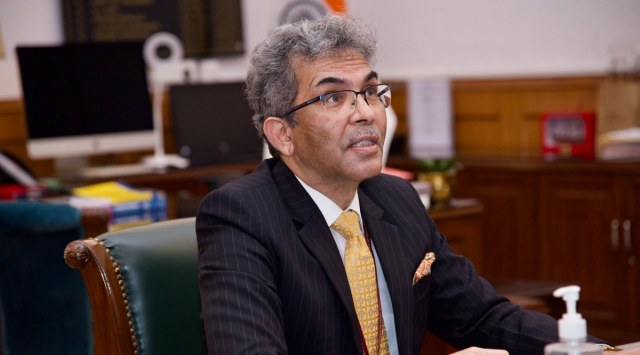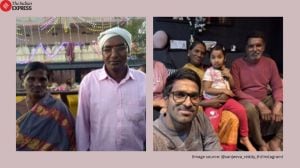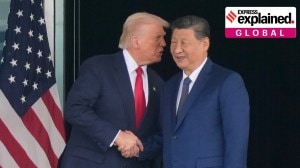The Budget has introduced provisions for enabling restriction of fake input tax credit (ITC) and it will help catch those fake dealers who were showing a sudden spike in their supplies and not paying the corresponding tax, Central Board of Indirect Taxes and Customs (CBIC) Chairman Vivek Johri said. In an interview with The Indian Express, Johri said rate rationalisation under GST will happen in phases as it cannot be very disruptive to revenue. Edited excerpts:

The important purpose of bringing in this provision, which talks about restricting ITC, is to ensure that a new taxpayer who has entered the system is not able to suddenly generate a large number of invoices for passing on ITC. We noticed that in the past, based on our investigation into fake dealers and fake ITC, there was one common trait – many of these big dealers did not have any income tax footprint, they had no background in dealing with goods and services and they were entering the system. They would issue invoices of large amounts, show a sudden spike in their output supplies, not pay the tax corresponding to those supplies and, then, leave the system in two or three months’ time. So, we want to have the ability to identify such taxpayers, so that in a centralised way, without leaving discretion in the hands of the officer in the field, we are able to, then, say that only so much of the credit be allowed in the first month; that is not to say that rest of the credit will never be available. Depending on his behaviour, we release the rest of the credit, but the sole purpose of having this enabling provision is to deal with the situation.
Story continues below this ad
The GST collections seem to have stabilised around the Rs 1.4-lakh-crore level. The initial idea was to have the system automatically detect leakages. How is it now?
E-invoice is definitely helping and we are going on lowering the threshold … The idea is that we should be able to universalise it for all invoices. You have invoices on the system, you have e-way bills for goods. To a large extent, you’re able to deal with the problem of fake invoices for goods. But people have become smarter, we find that they’re issuing fake invoices for services also, and unlike goods where it’s still possible to track the movement of goods, in services even that is not possible. So, that’s why the attempt is to have one source of truth in the system, which will be the invoice that we’ll try and we’ll use to construct the GSTR-1 of all GST dealers and the GSTR-1 then auto populates the GSTR-3B. So, there is a self checking mechanism within the system.
We’ve also tried to make checks more rigorous at the entry point. For the registration process, we introduced Aadhaar authentication and physical verification. The whole purpose of that is not to harass the trader, but to make sure that the taxpayer who’s coming in is duly identified. It’s not a bogus entity, it’s not a benami entity. Then, after the taxpayer is in the system, we are able to watch his behaviour. Based on the data that we collect from these sources, we are running analytics on all of them. We also do data triangulation, with other agencies, income tax, Customs, for example, MCA that also gives us some more clues about what is the background. That is how we intend to proceed.
Is textiles going to be the immediate focus for rate rationalisation under GST or will there be other items? Will fuel, especially ATF, be included under GST?
Story continues below this ad
I am not privy to what the GoM is wanting to proceed, but my limited understanding is that it is not confined to textiles. They will look at the overall rate structure. Some sectors need more capital…and the need for refunds, but, they will look at the overall interest. The Finance Minister while speaking to the industry chambers has said it (ATF) will be taken up at the next GST Council discussion.
So, that would mean slab changes? Or is there a middle rate or revenue neutral rate that is being looked at?
I don’t think they’ve applied themselves to that. There are various options. But obviously, whatever decision they take, it cannot be very disruptive to revenue because that is a concern. So, either they phase it in or they lay down a trajectory of how we should do it to get to the golden mean. The inversion thing will get corrected first, then the rate slab changes, and then, essentially doing it in phases. It will have to be phased.
The government has not favoured duty cuts for Tesla. Is the proposal off the table?
Story continues below this ad
I don’t think it’s fair to speak about a particular company’s proposal…but the current rate structure is fine. It doesn’t need any change. At the current rate structure, you have many other companies coming into the country, right? They’re not talking about rejigging the rate structure, they’re happy with 15, 30, 60, 100 per cent, right? Now, they take the call based on the value chain. You have to take a call as a business where you fit into that value … There are companies that are bringing in parts for manufacturing here. So all the options are there. To say that tariff is coming in the way of somebody investing in the country, whether for sale or for manufacture, I don’t think is a correct representation.

































